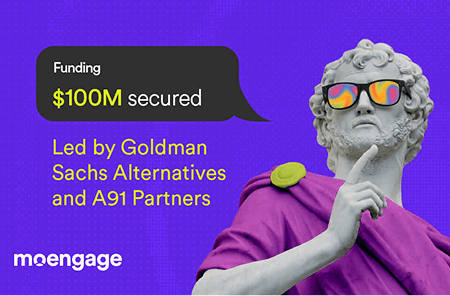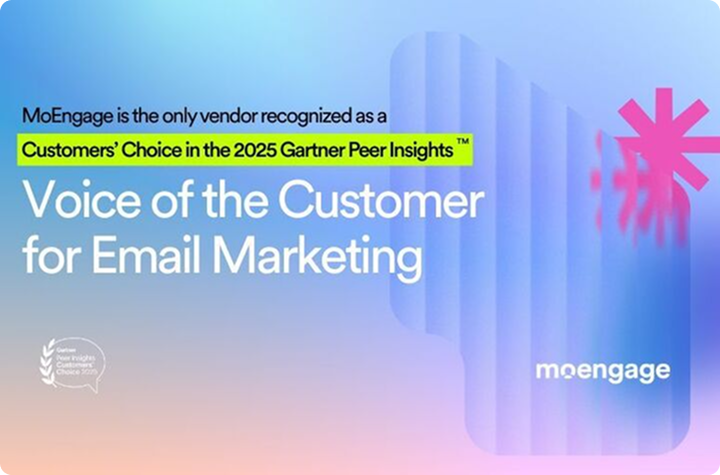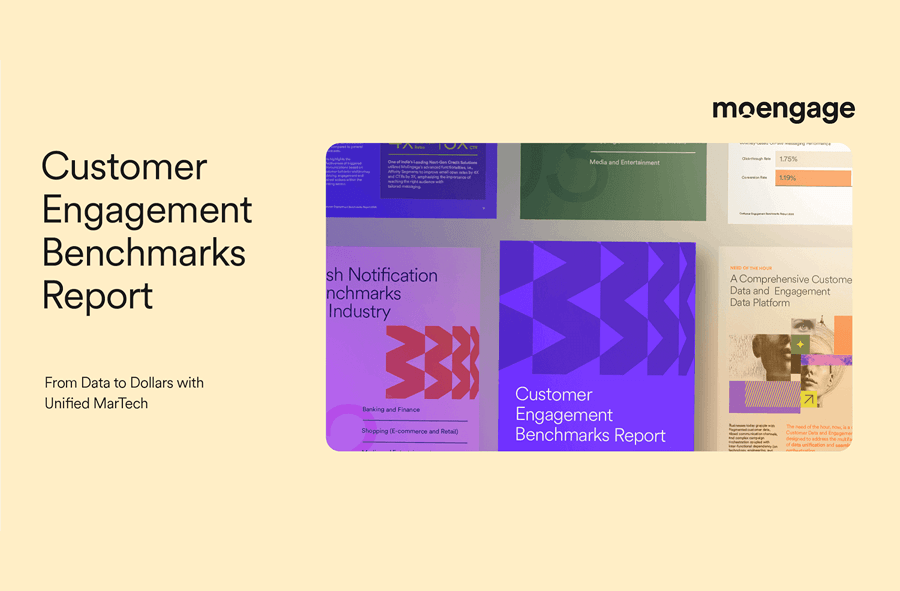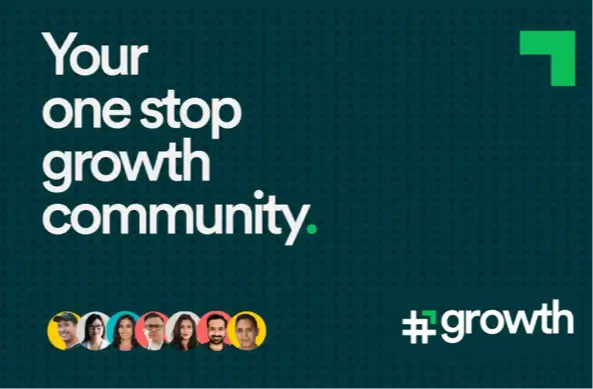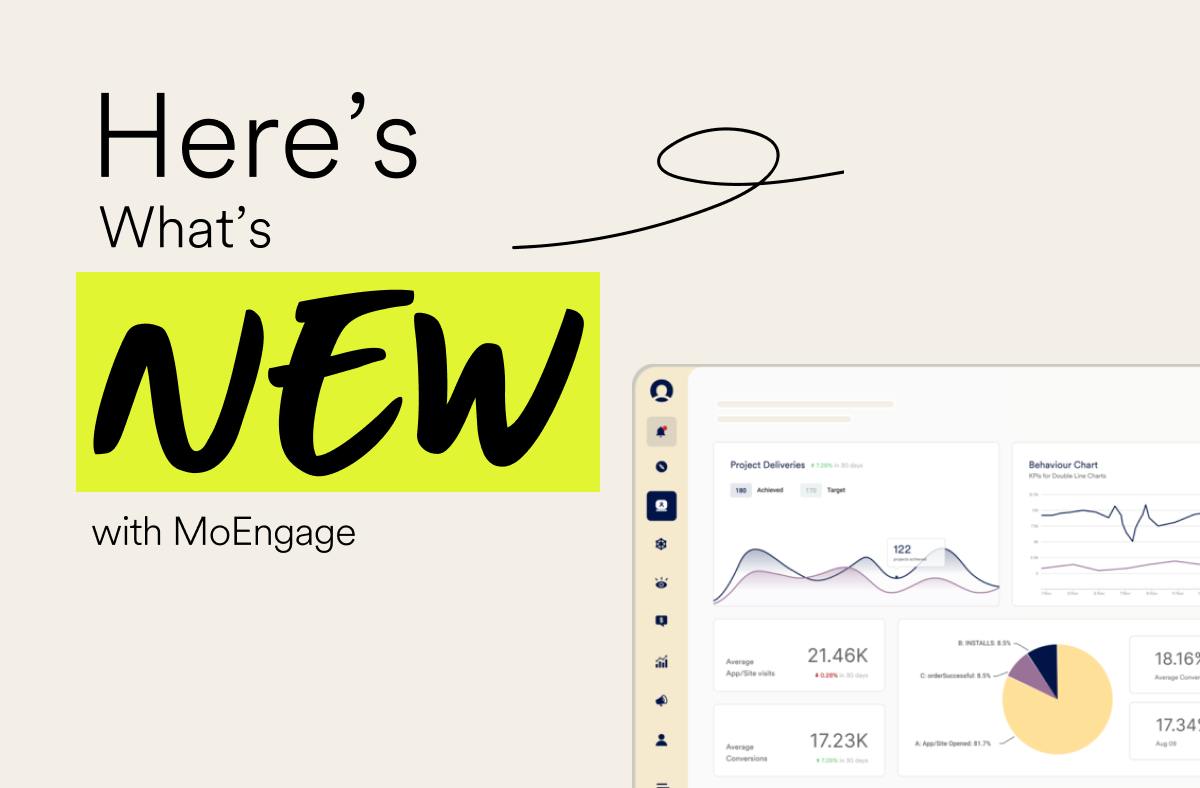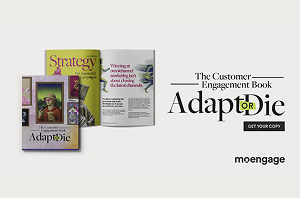Why Real-Time Push Notifications Matter for Your Brand
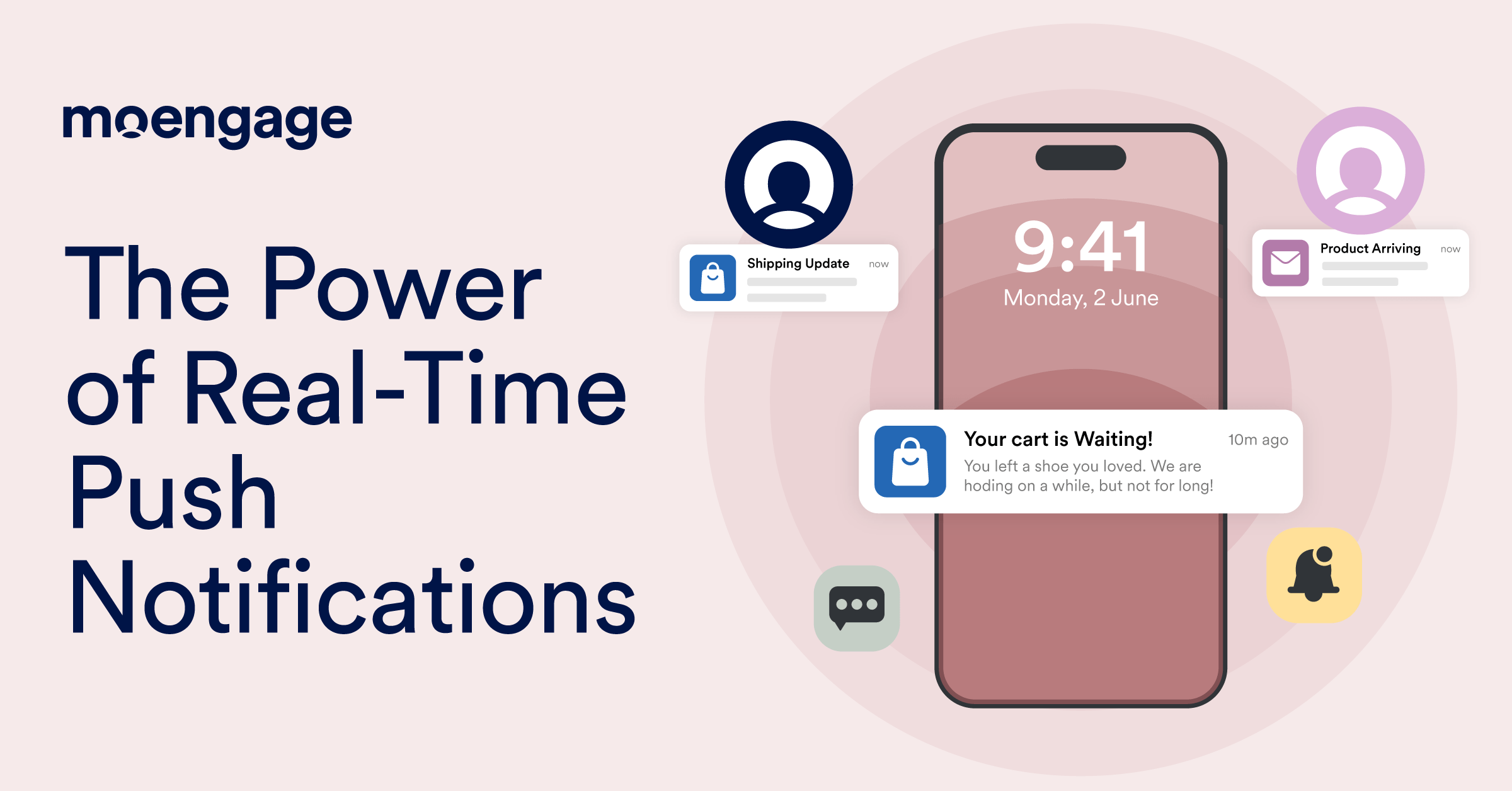
Reading Time: 8 minutes
Today’s customers are flooded with content, choices, and distractions, making it harder than ever for brands to grab their attention. This is where real-time push notifications shine. These messages are not only instant, but also behavior-aware, automated, and tailored to reach customers exactly when they’re most likely to act.
Think about it: a customer leaves something in their cart, browses a product several times, or signs up for an event, but forgets to attend. Push notifications sent in real time turn these fleeting moments into opportunities by triggering personalized nudges at just the right time.
In this blog post, we explore how such a powerful channel can help you create instant, relevant, and high-impact interactions with your audience.
What are Real-Time Push Notifications?
Real-time push notifications are instant alerts or messages sent to a customer’s device via an app or web browser. These notifications appear even when customers aren’t actively using your app or website, making them a powerful way to deliver timely updates, offers, or reminders that drive engagement and prompt action.
They’re typically triggered by specific customer actions or business events, like a price drop, product launch, or time-sensitive promotion, making them an effective way to keep customers informed and engaged without interrupting their experience.
How Real-Time Push Notifications Work
Real-time push notifications are essentially powered by automated systems. These systems trigger a web or mobile push notification in response to certain events. The triggers could be anything, like a customer action (like cart abandonment), a system update (such as a server reboot), or changes in status like order confirmation, delivery progress, or payment success.
Once any of these events are triggered, it automatically initiates a workflow that sends a notification to the customer within milliseconds.
Here’s a step-by-step guide on how this works:
- Define a trigger event: The notification is triggered by a specific customer action or system action (e.g., new message, order shipped, or login attempt).
- The trigger is detected in real time: Backend systems or event listeners constantly monitor for these defined triggers and instantly recognize when one occurs.
- Notification is generated automatically: Once triggered, the system automatically creates a personalized push notification using dynamic content (e.g., customer name, product details).
- Notification is sent to the push service: The message is sent to a push notification service that handles delivery to devices.
- Notification is delivered to the customer’s device: The push service delivers the notification to the customer’s browser or mobile device, even if the app or site isn’t currently open.
This real-time, event-driven process ensures customers receive timely, relevant updates without delays.
5 Benefits of Using Real-Time Push Notifications for Marketing Campaigns
Used strategically, real-time push notifications are a powerful marketing tool for improving customer engagement and driving timely actions that lead to higher conversions and stronger brand loyalty.
Unlike traditional emails or static ads, they allow brands to reach customers instantly and contextually, right at the moment they’re most likely to engage.
Here are five key benefits of using real-time push notifications in marketing campaigns:
1. Instant customer engagement
Mobile or web push notifications allow brands to interact almost immediately with customers, the moment something like a flash sale, cart abandonment, or breaking news occurs. This helps you grab the customer’s attention quickly, prompting faster action, especially when there are time-sensitive events like sales or limited-stock product launches.
Why it’s beneficial: Sending timely notifications is a great way to catch your customers at critical moments before their attention shifts elsewhere. In fact, consumers sometimes do purchase as a direct result of a push notification, highlighting just how powerful this kind of timely, personalized communication to improve customer engagement can be in influencing buying decisions.
2. Higher personalization and relevance
Real-time systems allow notifications to be triggered based on customer behavior, preferences, and location. This means messages can be personalized to each customer’s purchase journey, like suggesting a product they viewed but didn’t buy.
Why it’s beneficial: Personalized messages feel more relevant, improving customer satisfaction, boosting engagement rates, and reducing unsubscribes or app uninstalls. The business impact? According to McKinsey & Company, brands that grow faster drive 40% more of their revenue from personalization than their counterparts.
3. Increased retention and customer loyalty
Sending proactive, relevant notifications reminds customers of your value and nudges them to engage with your brand, creating a habit of interaction.
Why it’s beneficial: It’s always more cost-effective to retain existing customers rather than acquire new ones. Case in point — returning customers actually spend a whopping 67% more than new customers. When you send real-time push notifications, you’re able to maintain an active connection with your audience, which can be helpful in reducing churn.
A 5% increase in customer retention can increase profits by 25% to 95%, depending on the industry.
– Fred Reichheld, Bain & Company Fellow and Creator of the Net Promoter System
Source: https://media.bain.com/Images/BB_Prescription_cutting_costs.pdf
4. Higher conversion rates
Sending well-timed, behavior-driven push notifications can help you guide customers toward taking desired actions more effectively. For instance, you can notify them when a product they viewed is back in stock, when a discount is about to expire, or when they’ve left items in their cart, nudging them toward completing a purchase.
Why it’s beneficial: Today’s customers are halfway into their purchase journey before engaging with a sales rep, making real-time push notifications crucial. They meet customers where they are, delivering relevant nudges at the right moment. This behavior-driven engagement aligns with intent, boosting clicks, conversions, and purchases.
5. Automation at scale
Defined events trigger real-time notifications automatically, reducing the need for manual intervention while ensuring every customer gets the right message at the right time.
Why it’s beneficial: Automation can not only reduce customer service operational costs by streamlining processes and reducing human intervention, but it also saves time, eliminates errors, and empowers marketers to run complex, multi-touch campaigns across large audiences with minimal effort.
Common Real-Time Push Notification Use Cases for Marketers
Real-time push notifications are a quick, automated way to connect with your customers based on their behavior, preferences, and context. Here are some of the most effective use cases for push notifications:
- Abandoned cart reminders: Let’s suppose a customer adds an item to their cart but doesn’t complete the purchase. Based on this behavior, you can send a push notification with a limited-time discount or a reminder highlighting product benefits to nudge them to complete the checkout before they lose interest or forget.
- Location-based engagement: A customer walks past your retail store — your app detects their proximity via GPS and instantly sends a rich push notification with an image of a featured product and a 10% off coupon if they walk in within the next hour. These rich push notifications, enhanced with visuals and dynamic CTAs, create a compelling on-the-spot conversion opportunity based on real-world presence.
- Order milestone updates: These notifications are triggered any time the status of an order changes, e.g. shipped, delivered, delayed etc. Say a customer’s package has just been delivered. You can send them a real-time push notification that thanks them for their order and invite them to review the product, share feedback about the service, or browse complementary items.
- In-app behavior triggers: If a customer searches for ‘summer dresses’ in your app, scrolls through a few results, and then exits without clicking or adding anything to their cart. Within seconds, a real-time push notification is sent:
“Still looking for the perfect summer dress? Check out our bestsellers before they sell out!” This push is triggered based on live browsing behavior and acts as a timely nudge to re-engage the customer before their intent fades. - Personalized recommendations: Based on recent browsing behavior, purchase history, location, or even abandoned carts, marketers can use real-time push notifications to deliver product recommendations that are highly relevant to each individual customer. For example, if a customer recently browsed running shoes, they might receive a location-based push notification highlighting a new arrival in their nearby store or a related item like athletic socks or fitness trackers.
5 Real-Time Push Notification Strategies and Tactics
No matter what tactics you employ, always remember to follow push notification best practices. Here are a few real-life examples of how real-time push notifications can increase engagement, drive conversions, and build loyalty without overwhelming your audience.
1. Welcome notifications
You know what’s one of the best times to ensure your customers engage with your brand? Right after they create an account on your app or website, or subscribe to your emails. Sending real-time push notifications to welcome them on board is a great way to capture their attention because they interacted with your brand only seconds ago!
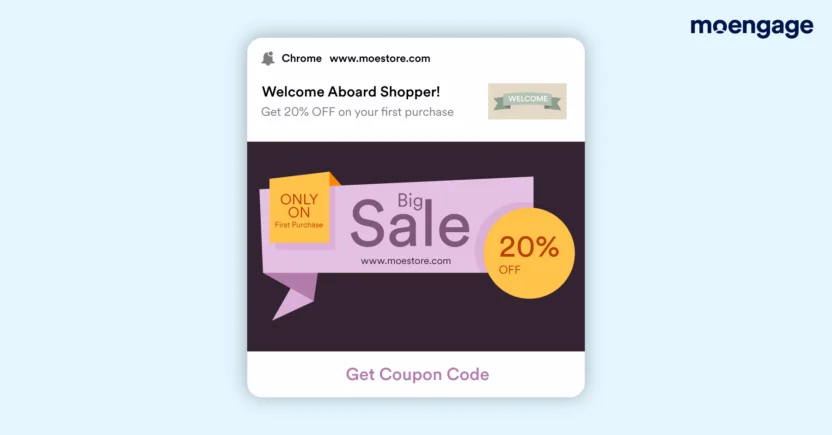
This is a great example of real-time push notifications because it uses real-time content publishing signals + subscriber interest data to welcome the customer. The discount on their first purchase and the notification’s delivery within seconds of signing up ensure the customers are driven to click on the notification and buy something from the brand immediately.
2. Context-driven product discovery
You can use real-time push notifications triggered by location and context to reach customers at exactly the right moment, when they’re most likely to act. By combining geofencing technology with timely, relevant messaging, brands can engage customers in physical spaces like malls, stadiums, or airports to drive immediate foot traffic and conversions.
This strategy is effective because it delivers hyper-relevant nudges based on where the customer is right now, making the message feel helpful, personal, and actionable in the moment.
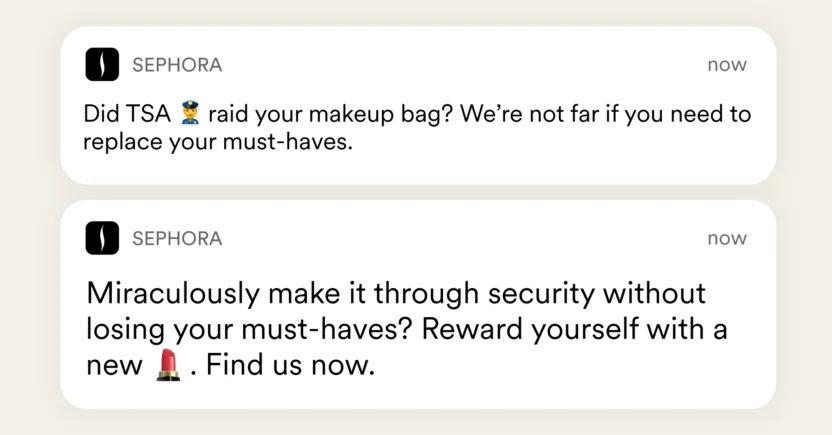
Here, the brand reacts in real time to the customer’s physical location (just past security in an airport) and delivers a message tailored to that moment. The copy taps into a relatable emotion (travel stress and relief), and the push prompts immediate discovery — driving in-store visits when customers are nearby and likely to browse.
3. Order confirmations
Real-time push notifications can be used to instantly confirm purchases and provide customers with order details the moment a transaction is complete. These transactional alerts not only reassure users that their order went through, but also serve as a seamless bridge between checkout and fulfillment, helping maintain trust and reducing post-purchase anxiety.
It delivers timely, critical information while engagement is still fresh, keeping the customer informed and in control.
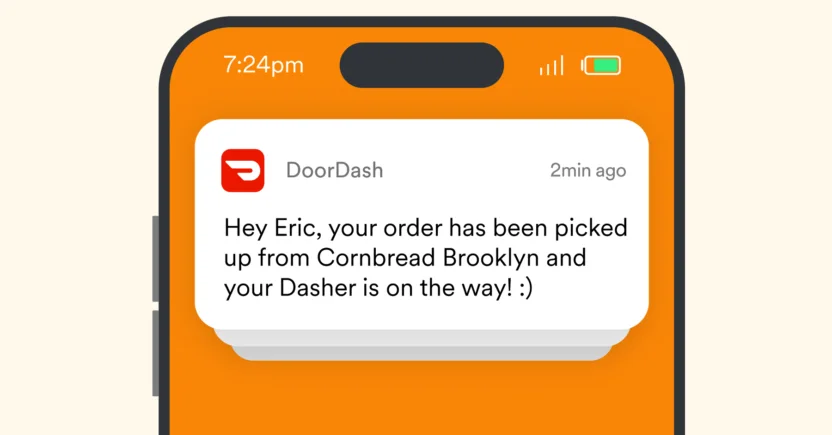
This push notification is triggered instantly after a successful order pickup, providing clear confirmation to the customer. The use of the customer’s name adds a personal touch, while the real-time delivery makes the push notification both functional and reassuring.
4. Status updates
You can also send real-time push notifications to make the customer experience simpler and more intuitive. Alaska Airlines’ push notification is an excellent example of real-time, value-driven customer service.

It delivers hyper-relevant information at the exact moment the event takes place and the customer needs it. By sharing the flight and gate details, it feels personal and helpful, making travel less stressful. It’s a perfect reminder for B2C marketers that timing and relevance make all the difference when connecting with customers.
5. Financial transaction alerts
Real-time push notifications are also useful for sending transactional alerts to customers. Whether you’re a BFSI brand or you belong to the Ecommerce industry, such messages can help notify customers of their spending or money transfers, the transaction details, and bank balance (in case of banks).
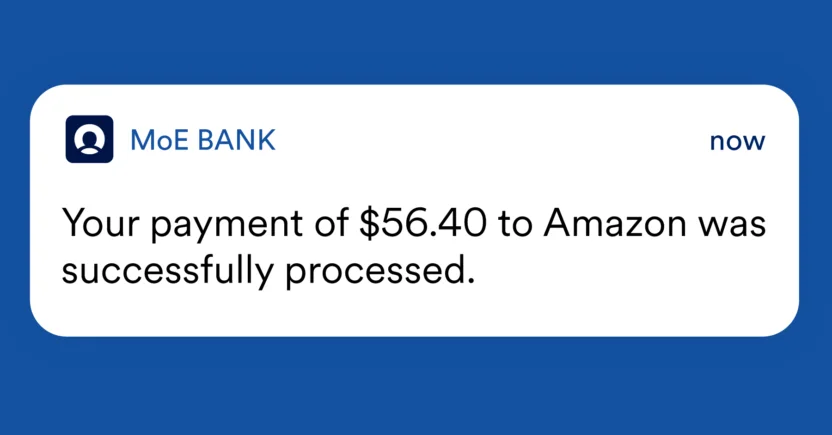
For instance, a customer who has just bought some stuff on Amazon for $56.40 gets the above real-time push notification right after the transaction. The benefit here is that the customer doesn’t have to wait and visit their Amazon app or mobile banking app to know if the payment went through. Everyone doesn’t have time every day to check their bank accounts.
On top of that, such a real-time notification helps build trust and confidence in the fact that the payment was indeed successful. In turn, the more customers trust the brand, the more likely they are to buy from it again.
How to Use MoEngage for Real-Time Push
In a world where timing is everything, real-time push notifications empower brands to meet customers exactly where they are, when they’re most likely to engage.
You can take this a step further with MoEngage’s advanced mobile push notification platform. It helps you craft personalized, behavior-driven messages that are delivered in real time, at scale.
If you’d like to explore how MoEngage’s advanced capabilities can help you create meaningful moments that move the needle, request a demo now, and our experts will take care of the rest.

